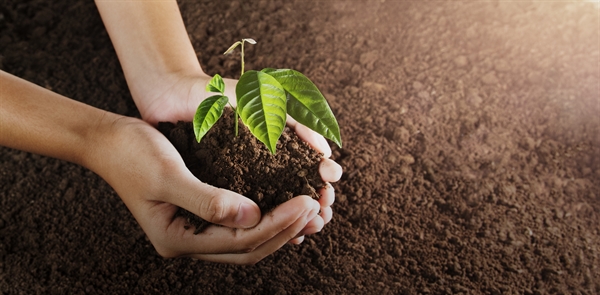
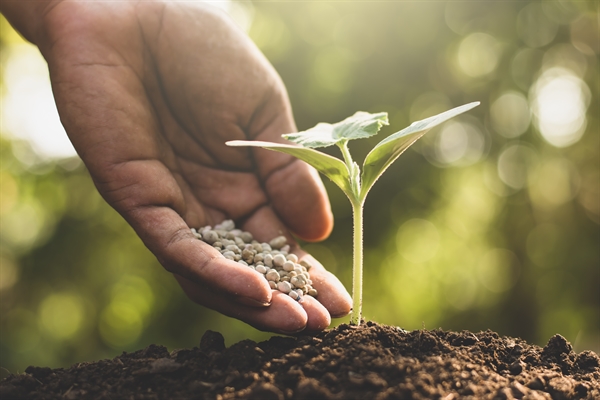
In 7712, Atticus Cuevas and James Rivas Learned About Mulch Grass Clippings
Grass professionals frequently advise “topdressing” lawns with a thin layer of garden compost. The material is spread out one-quarter to half inch thick in spring or fall, depending on local environment and soil. * Garden compost improves the moisture-holding capacity of the soil, includes nutrients, and feeds soil microbes. These microorganisms are essential to the complicated procedure that makes food offered to turf plants.
Compost spread on top of thatch can likewise speed thatch decay and eliminate the labor of mechanical elimination. However there is an issue: Compost quality differs. Whether you buy it by the bag, pick it up at the community leaf dump or have it provided by the lawn, how can you know that it is “great” garden compost? Think about these concerns: Is it at the completed stage?Does it consist of undesirable ingredients such as dyes or building materials?Are there viable weed seeds in the material?Could it have pesticide residues? The parent products and the composting process both impact the quality of the final product.
” That is to use compost that has gone through compost-specific screening.” Recognizing the issue this produces for consumers and the land care industry alike, the USCC started the Seal of Testing Guarantee (STA) in 2000. STA is a screening, labeling, and disclosure program created to bring exposure into the world of compost sales.
STA looks at 14 garden compost characteristics including organic matter, salts, p H, major nutrients, pathogens, metals, stability, and maturity. Rattie states one of the most significant concerns is the presence of pesticide residuals. Well-crafted compost, however, brings little of this threat. “A correct composting system ruins the frustrating bulk of pesticides and herbicides,” says Rattie.
” Most of STA participants offer wholesale through regional landscape supply lawns, garden centers, and through direct sales,” states Rattie. USCC uses several resources to discover STA compost and a calculator to help figure out the amount: Find a list of 200+ STA participants Check out Purchase Compost.com and utilize the USCC’s garden compost calculator on the upper right of the homepage.
” Bagged compost supplies only one cubic foot of product,” he says. “It takes 27 bags to get one cubic yard. Do the math!” When we utilized the compost calculator offered by the USCC at Buy Compost.com, we found that a one-quarter inch layer on a quarter-acre lawn (10,000 square feet) requires 7.7 cubic backyards or 5.9 cubic meters of garden compost.
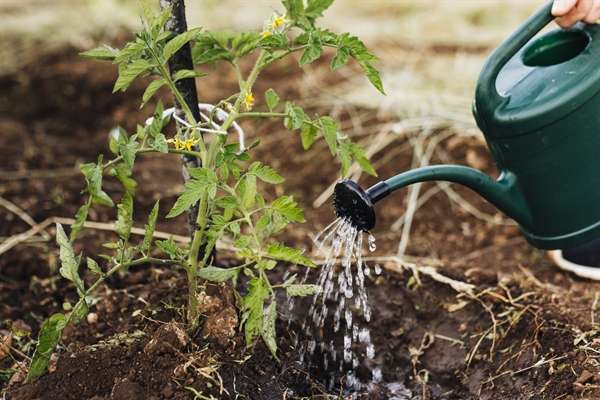
” Golf course and ball field superintendents having been using this method successfully for many years,” he states. Compost is spread out in spring or fall, but there are essential nuances. In cool-season locations, the spring application is usually lighter and the fall application heavier. In the south, topdress warm-season grasses in early spring.
Just put, compost is decayed organic matter but that doesn’t discuss much. To a romantic, garden compost is the very essence of life. The living aspect of the soil accountable for a myriad of the most superb and complicated procedures understood to guy. Organisms nourishing organisms all the method up the food chain from easy bacterium to crops to humans, none of it possible without decayed raw material: garden compost.
In 22003, Ariella Sampson and Dennis Cisneros Learned About Pick Up Grass Clippings
It is the things of life, brimming with microbes that enter into the nutrient cycle of plants. Garden compost can be made little scale; in a yard or underneath a sink, or large scale; in huge windrows turned by front-end loaders or other specialized devices. In any case, it is everything about disintegrating natural matter up until all that is left is a rich, dark, musty, almost sweet-smelling compound with the consistency of potting soil.
Hay, straw, fish gurry, animal manure, twigs, tree bark, and seashells are typically used to make up the composition of garden compost. The garden compost is normally blended two parts dry product (bark, leaves) to one part wet or green material (turf clippings, fish gurry) and left in either containers, stacks or windrows to break down.
Decomposing garden compost should remain uniformly wet however not wet. Depending upon the type of composting system, it can take anywhere from a couple of months to a year or more to finish the process, often described as “cooking.” Actively rotting garden compost is said to be cooking because temperature levels can reach anywhere from 120 to 160 F.
Warning Garden compost is ruled out properly cooked unless it has actually reached these heats enough time to sterilize weed seeds and remove harmful bacteria discovered in some manures. Ultimately, more intricate organisms like amoeba and nematodes take in the simpler germs and fungis, the stack starts cooling while the nutrients in the compost end up being increasingly more focused from their waste products and additional decay.
Compost that is not totally ended up can have an ammonia odor to it and may not provide the wanted effects or it can even hurt the plants as it continues to cook. It’s the bacteria in compost that give it its magic. Countless microorganisms go to operate in the soil, biking nutrients and making them offered to be taken up by the plant.
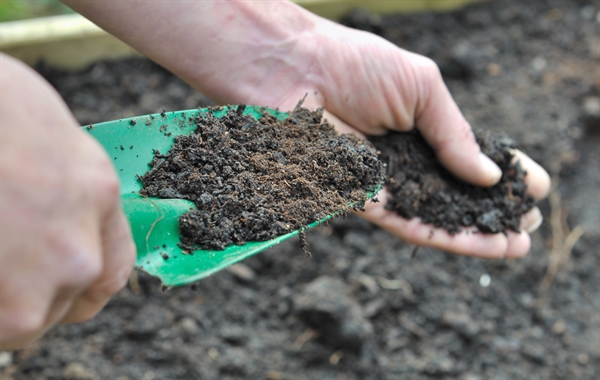
Compost is also packed with micronutrients and other intricate biology that is incredibly beneficial for plant growth. Compost adds life to the food web, eventually leading to healthier turf. Great quality garden compost includes a high portion of completed raw material with the rest being comprised by smaller unfinished natural matter like wood chips, sawdust, seas shells and mulched leaf matter.
Garden compost can be spread out by hand with shovels by using a tossing action to attempt and achieve a layer about 1/4″ thick. It can be smoothed out with a rake to blend it in a little much better and after a number of days it will not even be visible on the surface area of the lawn.

Using the compost right away after seeding and aerating is an excellent way to integrate the garden compost straight into the soil and provide a dive start for seedlings. Simply doing this one or two times a year will benefit the yard more than many quick-fix items that are hassle-free but not constantly the very best option.
In Selden, NY, Triston Pace and Gerald Mitchell Learned About Mulch Grass Clippings
Preferably, a lawn would be topdressed with compost a number of times a year however a composting program will eventually be dictated by time and cash. The target for a composting program need to for a lawn’s soil to contain 5% natural matter. It looks like a small amount but it can take years to construct up in specific soils.
When raw material starts to develop in the soil, topdressing can be cut down to one or two times a year. Likewise, the need to fertilize and water the lawn will begin to decline as the soil begins to supply optimal growing conditions for grass. Weed, insect and disease pressure will reduce also, leading to cost savings over the long term as the work of the healthy soil changes the life support system of synthetic fertilizers and chemical pesticides.
Home & Garden Green Living How to Top-Dress Lawns with Garden Compost By Cathy Cromell, The National Gardening Association If you have actually gone through the effort of making abundant compost of your own, you can use it to top-dress your yard for thicker, healthier yard. You can utilize compost to top-dress both brand-new and existing lawns.
Top-dressing is especially helpful in dry environments or during dry or breezy spells, where the soil and seeds easily dry out within hours. (If a germinated seed dries, it’s a goner.) On an existing lawn: Top-dressing with compost may also rejuvenate existing yards. Lawns often end up being compressed over time from foot traffic, play, and mowing, which prevents air, water, and nutrients from distributing easily through the turf’s root zone.
To core aerate a small spot of turf, utilize a specialized foot press that you can discover at your regional home and garden store. For large lawns, rent a maker from an equipment supply business or employ a yard upkeep company. When top-dressing with garden compost, you need to only utilize screened compost or garden compost with particle sizes of 3/8-inch or less.
Also, make sure to top-dress with compost that’s ensured complimentary of weed seeds, or you might be sowing a future weeding nightmare into your yard! No matter where you live, the finest time to aerate and top-dress your yard is when it is most actively growing. This allows the grass to vigorously rebound after having holes typed it.
Avoid aerating these turfs during summer season’s intense heat, which may stress roots. Although some development takes place in early fall, these kinds of lawns go semi- or totally inactive as weather cools, making recovery after a late aeration more stressful. Also, early aeration promotes better penetration of summer and fall rains through the soil when it’s most advantageous for development.

If you live in a warm environment that enables year-round yards, you have various alternatives. The very best time to aerate and top-dress is early to mid-summer when your warm-season lawn (such as Bermuda yard) is actively growing. You ought to likewise use compost top-dressing (without aeration) after overseeding your summer season lawn with a cool-season yard (such as ryegrass) in the fall.
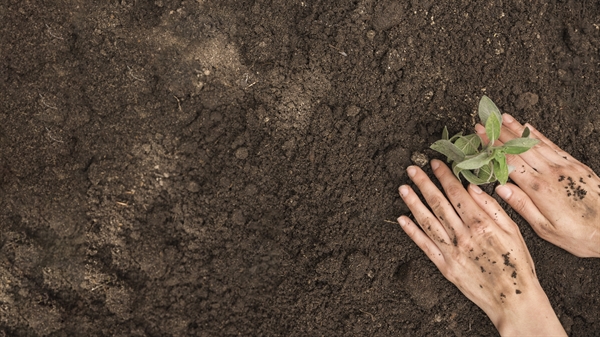
In Palm City, FL, Guadalupe Mccarty and Daniela Craig Learned About Can You Use Grass Clippings As Mulch
The arrival of summer season advises us that it’s not too late to nourish your yard the healthy way with natural garden compost from World Natural. As lawn-spraying services broaden their grip on suburbia it is essential to bear in mind that using organic practices to motivate turf in your yard secures your pets and household from harmful chemical fertilizers and herbicides.
It will considerably increase helpful microbial activity in your soil, benefiting your lawn much more. And it’s an excellent way to treat the areas in your yard that are thin, brown and unhealthy. From Organic Lawns, Healthy Soil: “Established yards benefit significantly from a single annual application of garden compost, even more significantly from two.
Depending on your yard’s size, a wheel barrow and a shovel might be the very best method to disperse compost around your backyard, followed by an excellent raking (a push broom will also work) to disperse it more equally. Though hard to discover and troublesome to utilize efficiently, a garden compost wheel or peat spreader can disperse garden compost throughout small lawns though they can be tough to press and need to be refilled often.
Garden compost ought to be spread out no more than a half-inch deep. The concept is not to bury yard blades, smothering them and keeping them from sunlight. If that indicates less than a half-inch of garden compost, then decrease your application. You desire turf blades exposed to oxygen and sunlight. Applying compost to problem areas will also assist treat them.” Adding compost will help your lawn’s soil keep wetness throughout the long hot months of summertime, keeping your grass greener longer.
Do Garden compost: Lawn clippings, leaves, stalks, dead plants, branches up to pencil diameter, and most weeds. Don’t Compost: Weed seeds and invasive weeds like ivy (they resprout!), infected plants, family pet waste, clippings treated with weed or bug killers, or food waste. Rather, attempt the rodent-resistant methods described in Food Waste Composting.
It takes 6 to 12 months for soil creatures to alter many yard waste into finished compost. For faster composting, keep your stack as damp as a wrung-out sponge. Chop up stalks and twigs. Mix “green” products like yard clippings with “browns” like fall leaves and stalks. Symptom Cause Service Bad smells Pile too wet, no air, or includes food or pet waste Turn stack.
Get rid of food. Pile is dry Inadequate water Turn pile. Include water to keep as wet as a sponge. Moist enough, but sluggish composting Insufficient “greens” Turn pile. Include “greens” like lawn, plants, or manure Slimy grass, ammonia smell Excessive fresh grass in pile Leave clippings on lawn, rather of composting.
Stack shrunken, but looks un-decomposed Top too dry, completed compost is at bottom Harvest ended up garden compost from bottom. Start new pile with un-composted material. Contact the experts at the Garden Hotline at (206) 633-0224 (language interpretation available) or at Garden Hotline. Composting in the house Guide (pdf) – Demand a complimentary copy.
In Mount Laurel, NJ, Shyla Waters and Carlee Harper Learned About With Grass
Compost Resource List (pdf) – Lists bin suppliers, tools, and more. Composting Questions & Responses (pdf) – Answers to some common questions. Tilth Alliance – Offers classes in composting and natural gardening, and home-made garden compost bin plans.